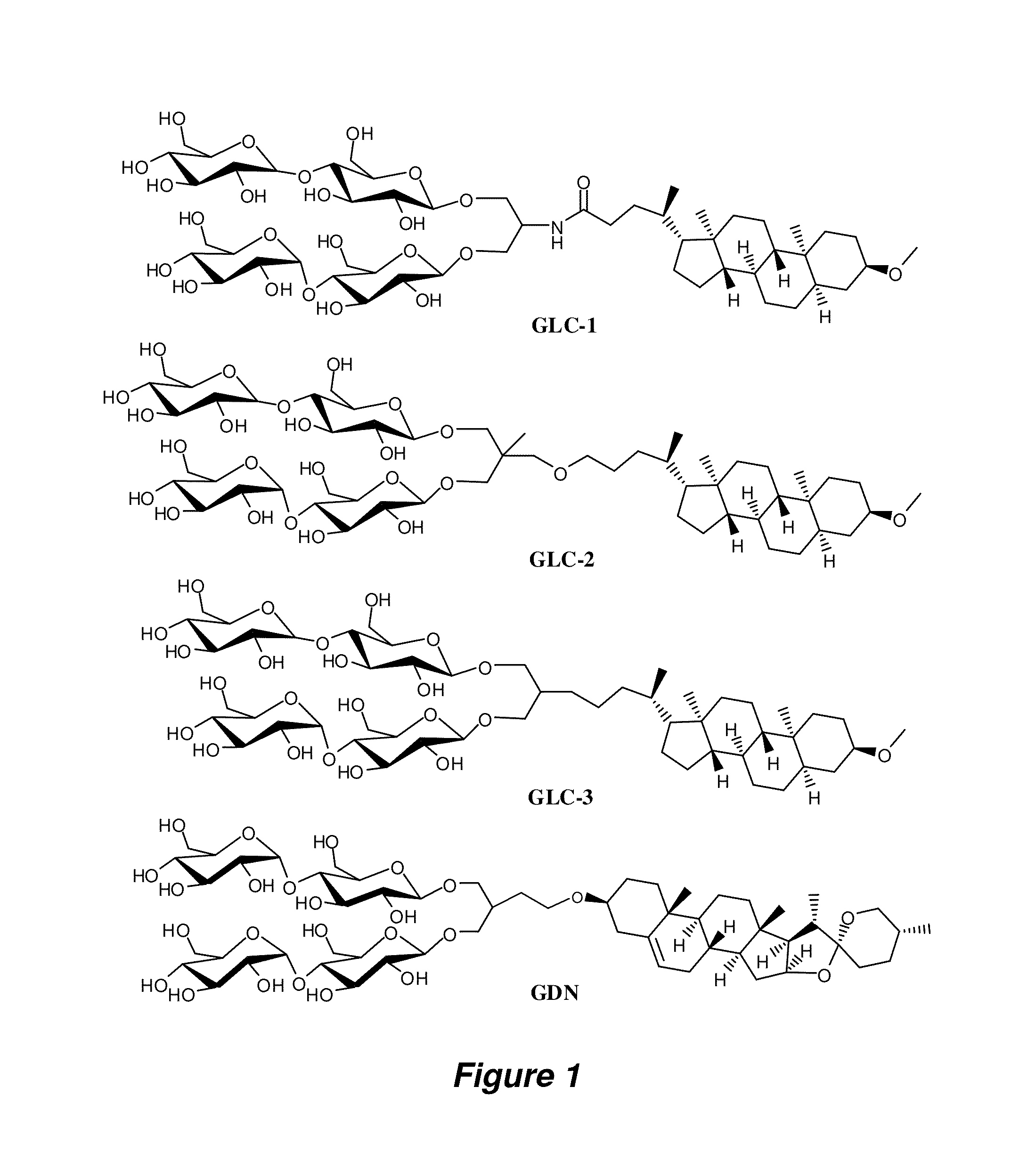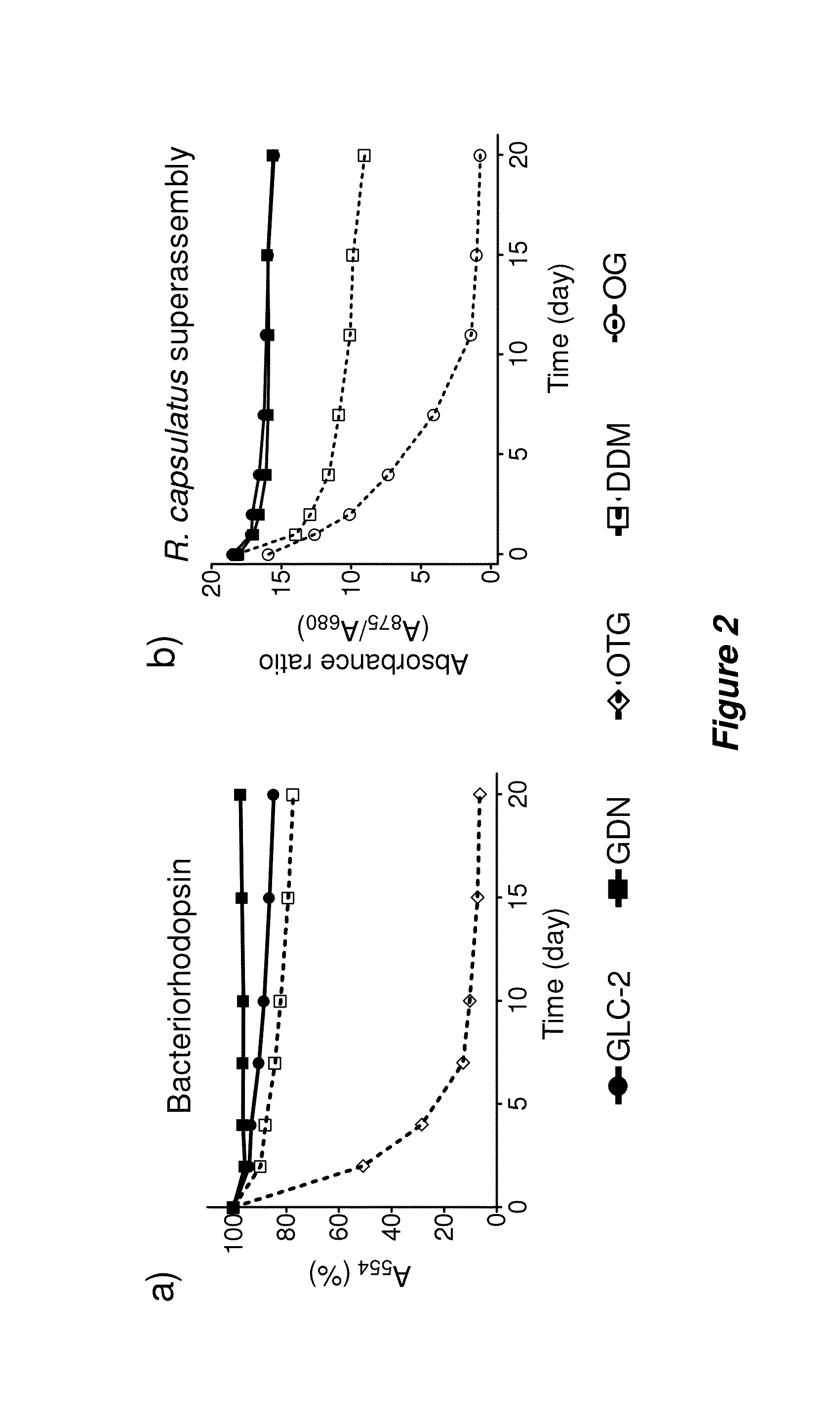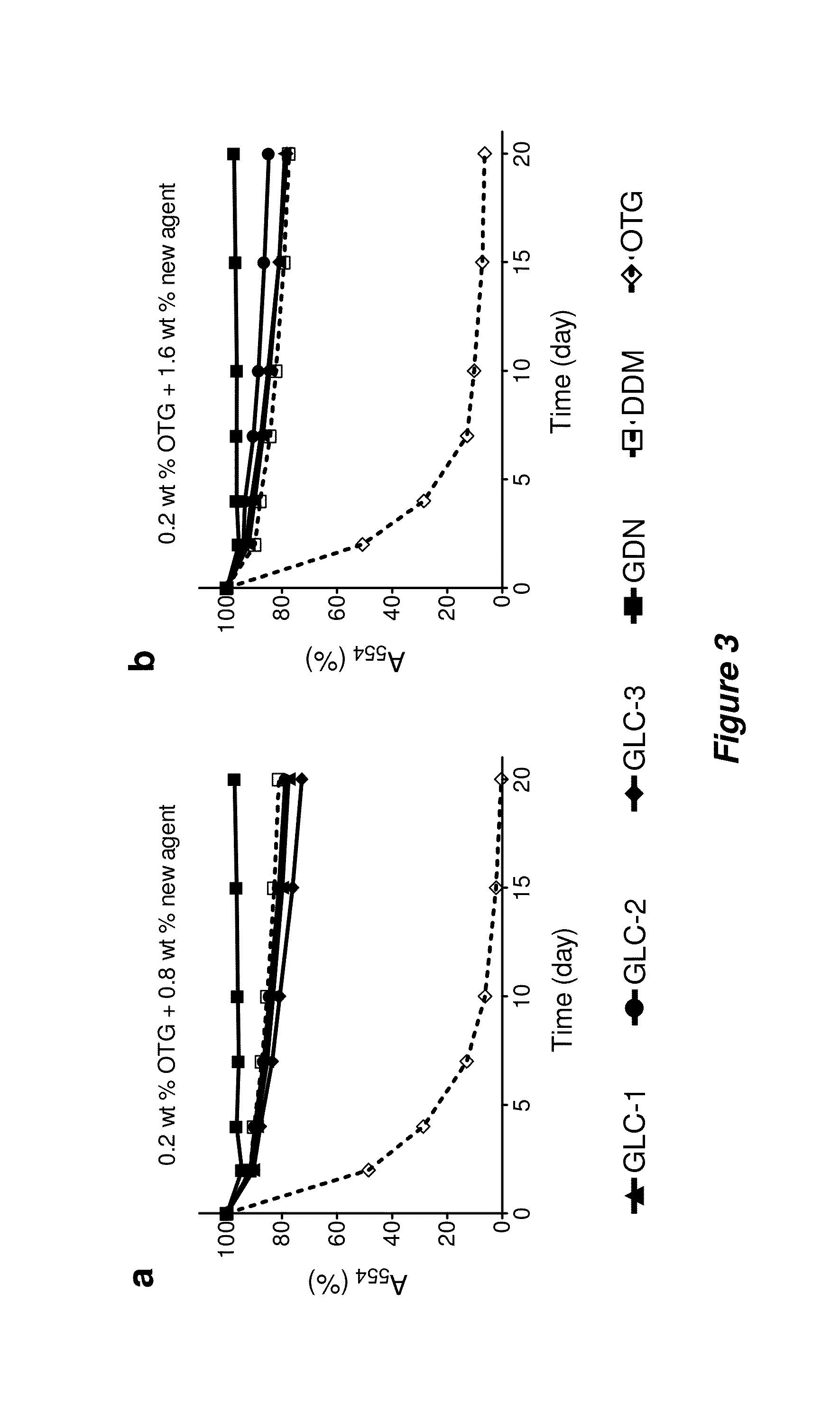Amphiphilic compounds
a technology of amphiphilic compounds and compounds, which is applied in the field of amphiphilic compounds, can solve the problems of inability to meet the requirements of aqueous environment, difficult and sometimes impossible characterization of impurities, and techniques that are effective for solubilization are not always optimal or effectiv
- Summary
- Abstract
- Description
- Claims
- Application Information
AI Technical Summary
Problems solved by technology
Method used
Image
Examples
example 1
Preparation of GLC Amphiphiles
[0142]A. Synthesis of Perbenzoylated Maltosylbromide.
[0143]This compound was prepared by following the reported protocol for perbenzoylated lactosylbromide (Kamath et al. Carbohydr. Res. 2004, 339, 1141-1146) with modifications as follows. To a solution of maltose monohydrate (30 g, 0.083 mol) in pyridine (300 mL) was added slowly benzoyl chloride (106 mL, 0.92 mol) and a catalytic amount (˜0.2 g) of dimethylamino-pyridine (DMAP) at 0° C. The resulting solution was allowed to warm to RT and stirred for 20 hours at the same temperature. The solution was taken up with EtOAc (300 mL) and was washed with an iced aqueous 2N HCl solution until the aqueous phase became acidic. The neutralized organic layer was washed with brine (2×200 mL). The collected organic layer was dried over anhydrous Na2SO4 and removed by rotary evaporation to give crude syrup. This crude syrup was used for the next reaction without further purification. The crude material was dissolve...
example 2
Preparation of GDN Amphiphiles
[0162]The synthetic scheme for the preparation of amphiphile GDN is illustrated in FIG. 15.
[0163]Compound 7. Ethyl diazoacetate (1.8 g, 15.7 mmol) was added to a solution of diosgenin (5.0 g, 12.1 mmol) dissolved in anhydrous CH2Cl2 (100 mL) under N2 atmosphere. BF3.etherate (0.083 g, 0.67 mmol) was then added to the solution and then the resulting reaction mixture at RT for 1.5 days. The reaction mixture was quenched with a saturated aqueous NaHCO3 solution and extracted with ethyl acetate (200 mL). The organic layer was washed with water (200 mL) and dried with anhydrous Na2SO4. The residue was purified by silica gel column chromatography (EtOAc / hexane) providing a desired product (7) as a white solid (3.3 g, 55%). 1H NMR (300 MHz, CDCl3): δ 5.35 (d, J=5.2 Hz, 1H), 4.41 (q, J=7.3 Hz, 1H), 4.20 (q, J=7.0 Hz, 2H), 4.12 (s, 2H), 3.52-3.42 (m, 1H), 3.37 (t, J=10.6 Hz, 1H), 3.28-3.18 (m, 1H), 2.46-2.34 (m, 1H), 2.34-2.18 (m, 1H), 2.07-1.80 (m, 5H), 1.80-1....
example 3
Protein Stability Evaluation
[0168]Bacteriorhodopsin Stability.
[0169]The procedure for the bR stability assay generally followed the reported protocol (Bazzacco et al., Biomacromolecules 2009, 10, 3317-3326). Frozen aliquots of purple membranes containing bR at 184 μM were thawed at room temperature and solubilized by using an octylthioglucoside (OTG) solution for 24 hr at 4° C. in a dark room. For this purpose, OTG (CMC=0.28 wt %) was used at 2.0 wt % in 10 mM sodium phosphate (pH 6.9). Membrane debris was then removed from the solubilized material via ultracentrifugation at 200,000 g at 4° C. for 20 min. The supernatant, including bR protein, was transferred into individual DDM, GLC, or GDN solutions, giving final concentration of OTG: new amphiphiles=0.2 wt %:0.8 wt % (1:4) or 0.2 wt %:1.6 wt % (1:8). The stability of bR in each solution was monitored by measuring absorbance at 554 nm over 20 days.
[0170]Solubilization and Stability Assay for R. capsulatus Superassembly.
[0171]The s...
PUM
| Property | Measurement | Unit |
|---|---|---|
| pH | aaaaa | aaaaa |
| pH | aaaaa | aaaaa |
| pH | aaaaa | aaaaa |
Abstract
Description
Claims
Application Information
 Login to View More
Login to View More - R&D
- Intellectual Property
- Life Sciences
- Materials
- Tech Scout
- Unparalleled Data Quality
- Higher Quality Content
- 60% Fewer Hallucinations
Browse by: Latest US Patents, China's latest patents, Technical Efficacy Thesaurus, Application Domain, Technology Topic, Popular Technical Reports.
© 2025 PatSnap. All rights reserved.Legal|Privacy policy|Modern Slavery Act Transparency Statement|Sitemap|About US| Contact US: help@patsnap.com



